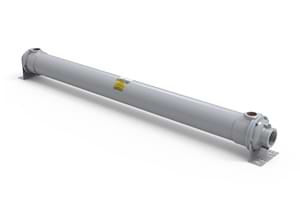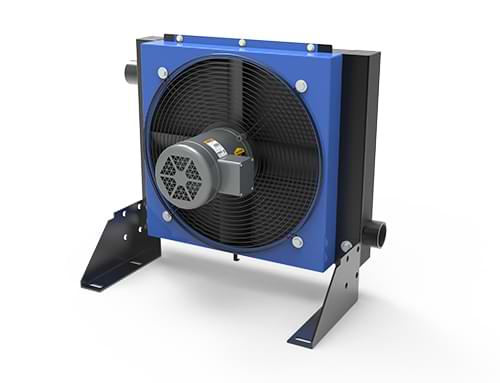Aftercoolers for Micro Abrasives Blasting
Unlike traditional blasting methods, microblasting operates on a smaller scale, making it ideal for delicate or intricate components such as medical devices, electronics, and aerospace parts. The process employs abrasives like aluminum oxide, glass beads, or sodium bicarbonate, typically ranging from 10 to 150 microns, allowing for pinpoint accuracy without damaging fragile substrates.
Water Cooled Aftercoolers
Compressor Cooling
- Fixed or Removable Tube Bundles
- Material Options Available
- Standard and Custom Options

Air Cooled Aftercoolers
Compressor Cooling
- Use Ambient Air to Cool
- Variety of Motor Options
- Standard Pressures of Up To 250 psi

Comparison to Other Blasting Operations
Micro abrasive blasting stands apart from other blasting methods like sandblasting, shot blasting, and soda blasting due to its precision and gentler approach. Hereís how it compares:
- Sandblasting: This uses coarser abrasives (e.g., silica sand) and higher pressure, making it suited for heavy-duty tasks like rust removal or large-scale surface preparation. However, itís too aggressive for delicate materials, unlike microblasting.
- Shot Blasting: Employing metallic shot or grit, shot blasting is designed for tough surfaces like steel or concrete. It excels at peening or strengthening but lacks the finesse of microblasting for small or intricate parts.
- Soda Blasting: Using sodium bicarbonate, soda blasting is gentler than sandblasting and effective for cleaning without etching. While it shares some similarities with microblasting, itís less precise and not ideal for detailed work.
Microblastingís key advantage is its ability to target specific areas without affecting surrounding surfaces, offering superior control and minimal material removal. However, itís slower and less efficient for large-scale projects compared to its more robust counterparts.
The Role of Aftercoolers in Micro Abrasive Blasting
Aftercoolers are critical components in micro abrasive blasting systems, ensuring consistent performance and equipment longevity. Hereís why they matter:
- Moisture Control: Compressed air often contains water vapor, which can clump abrasive particles, clogging nozzles and reducing precision. Aftercoolers cool the air, condensing moisture for removal before it reaches the blasting unit.
- Equipment Protection: Dry air prevents corrosion in the blasting system, especially in precision tools where even minor damage can disrupt performance.
- Consistent Abrasive Flow: By eliminating moisture, aftercoolers ensure a steady, uninterrupted stream of abrasive, vital for the fine tolerances required in microblasting.
In summary, micro abrasive blasting offers unmatched precision for delicate applications, distinguishing it from broader blasting methods. Aftercoolers enhance its effectiveness by maintaining dry, reliable airflow, making them indispensable for optimal results.


